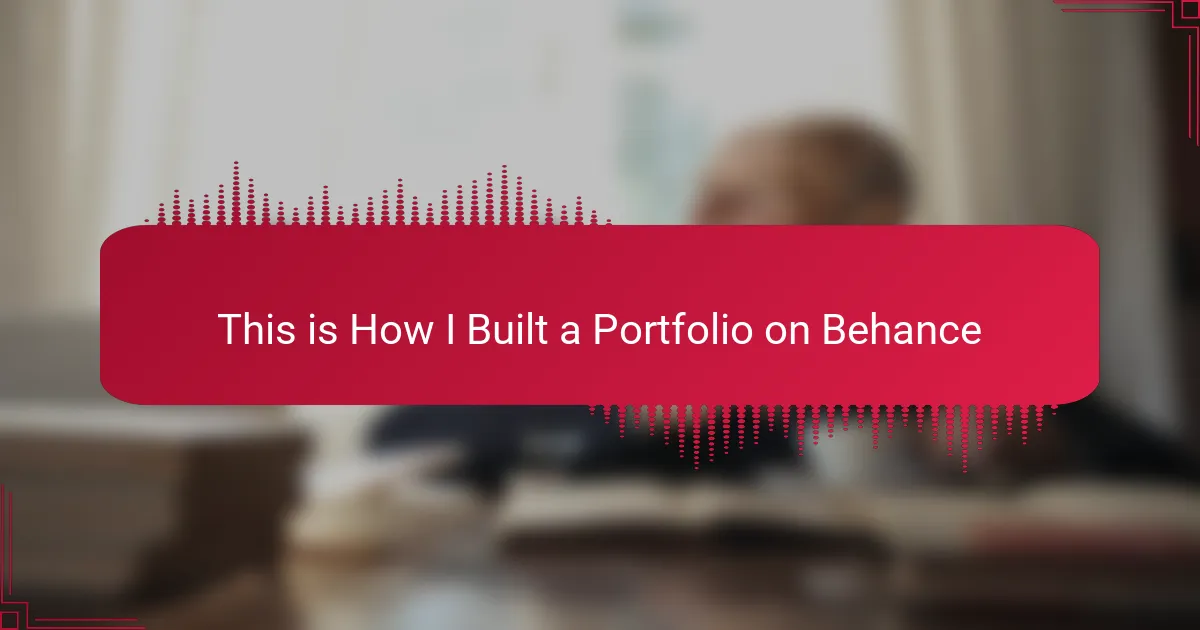Key takeaways
- A well-curated portfolio is crucial for comic book authors to showcase their unique style and storytelling ability, creating a lasting impression on potential readers and collaborators.
- Engagement with the Behance community through constructive feedback and collaborations can enhance artistic growth and foster valuable connections.
- Incorporating clarity in storytelling and interactive elements can make comic projects more compelling and relatable to readers.
- Personalizing your portfolio by sharing authentic stories and showcasing a diverse range of works can help define your unique artistic brand.
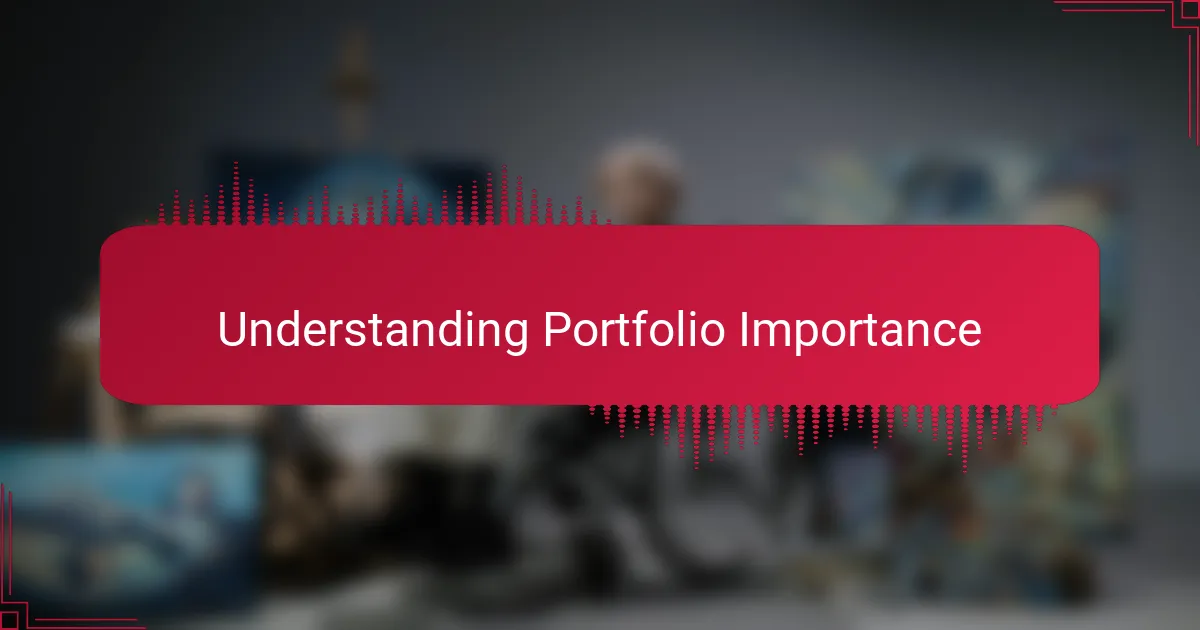
Understanding Portfolio Importance
A portfolio is essential for any comic book author, as it serves as the first point of contact with potential readers and collaborators. I remember when I first started sharing my work on Behance; the thrill of showcasing my creations made me realize how vital it was to have everything polished and accessible. Your portfolio reflects not just your artistic style but also your unique storytelling ability, which can make or break opportunities in the industry.
The importance of a well-curated portfolio cannot be overstated. It’s where you demonstrate your skills, creativity, and vision as a comic book author. Every piece you choose to include should resonate with your audience and tell a cohesive story about who you are as a creator.
- Creates a lasting impression on potential clients and readers.
- Showcases your unique artistic style and storytelling approach.
- Helps differentiate you from other authors in a competitive market.
- Acts as a platform for feedback and growth through viewer engagement.
- Establishes your online presence in the creative community.
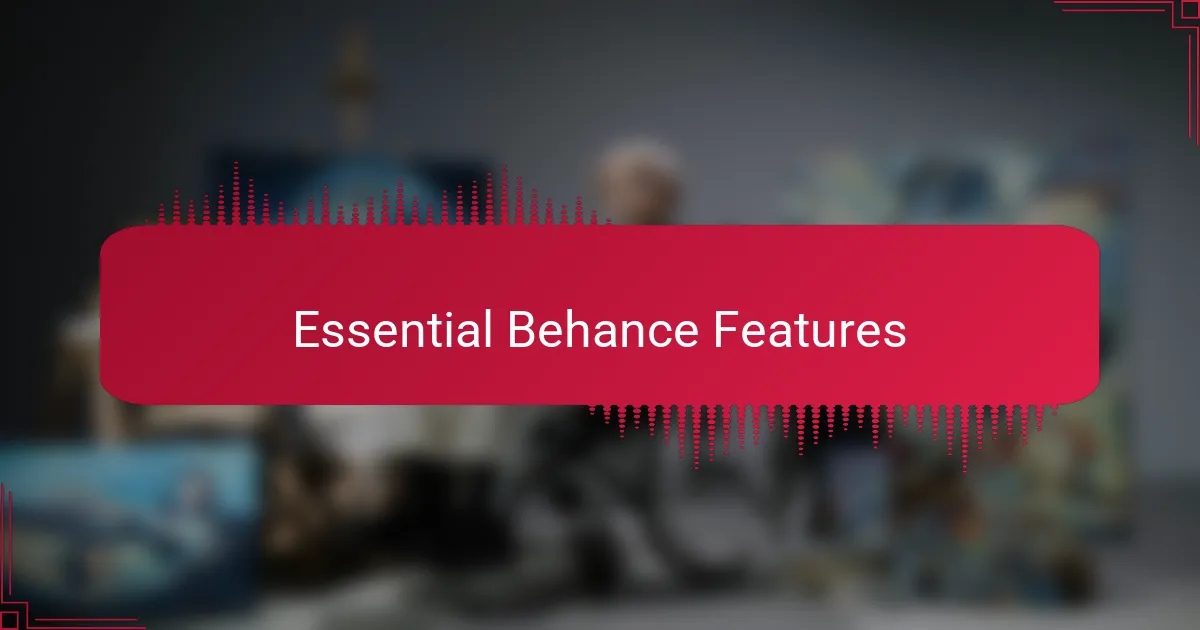
Essential Behance Features
When I first explored Behance, I was struck by its user-friendly interface. Everything feels intuitive, making the process of uploading and organizing projects simple. I can easily create distinct project categories, which is so important when you want to highlight different aspects of your work, like character design or storyboarding. Have you ever felt overwhelmed trying to present too many styles at once? That’s where Behance shines—allowing you to curate projects that tell specific stories.
One feature that I absolutely love is the ability to add process images and annotations. They give viewers insight into my creative journey, transforming a simple piece of art into a narrative of growth and experimentation. I remember presenting a comic strip on Behance; by sharing my rough drafts and sketches, folks engaged with the evolution of the character and connected more deeply with my storytelling. This level of transparency can really resonate with readers and collaborators.
Another standout aspect is the community feedback tool. I often post new work anticipating commentary, which not only boosts my confidence but also helps refine my craft. How many times have you wished for constructive criticism as you navigate your creative process? With Behance, public comments can foster a sense of connection and mentorship, creating an invaluable resource for budding comic authors like us. These features aren’t just practical—they are pivotal in shaping our artistic identities.
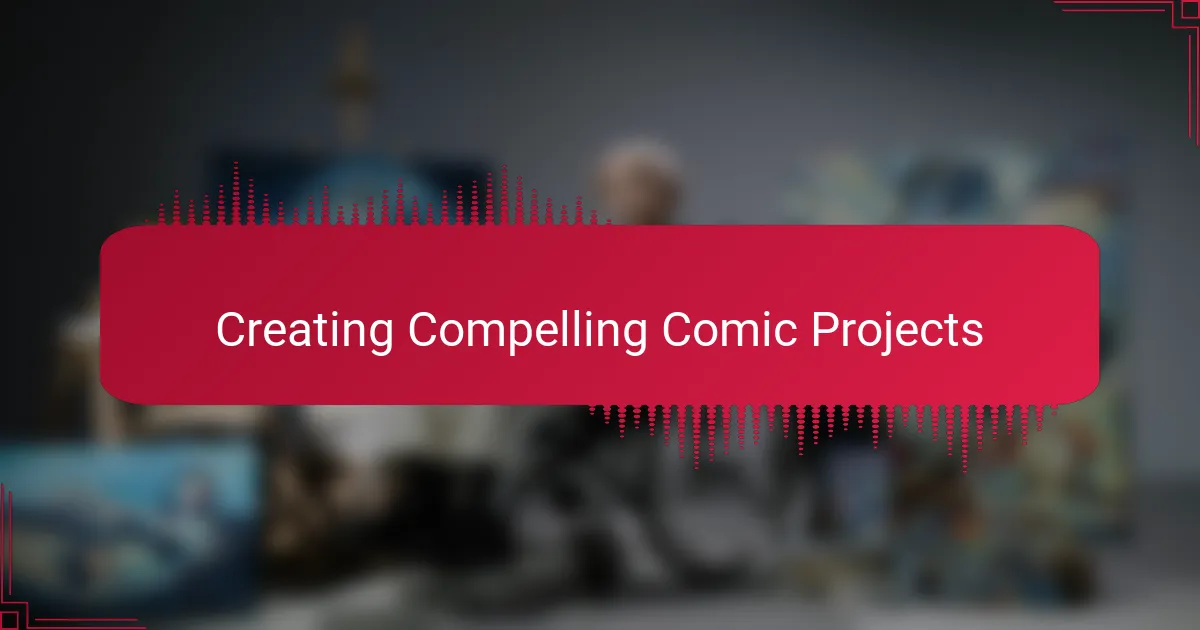
Creating Compelling Comic Projects
When working on comic projects, I find that clarity in storytelling is just as crucial as the artwork itself. A compelling narrative draws readers into your world, making them emotionally invested in your characters. I remember creating a comic that started as just a vivid image in my mind but evolved into a rich story that I painstakingly crafted. Each panel felt alive when I prioritized coherent storytelling, reminding me that every comic should have a clear beginning, middle, and end to resonate with the audience.
One of my favorite techniques is incorporating interactive elements within my projects. By asking questions in the comic or exhibiting relatable scenarios, I’ve noticed readers become more engaged and excited to see what happens next. During one project, I included a short commentary on the inspiration for each character. The response was overwhelming; it felt amazing to share my thought process and make readers feel as if they were part of the creative journey with me.
I’ve realized that diversity in themes and styles can also make a project captivating. When experimenting with genres—like contrasting dark humor with lighthearted adventures—I discovered new dimensions to my storytelling. Have you tried blending genres in your comics? It opens up opportunities to connect with a broader audience and keeps your portfolio dynamic and fresh. Each time I challenge myself in this way, I find that I not only grow as an artist but also keep my audience eagerly anticipating what’s next.
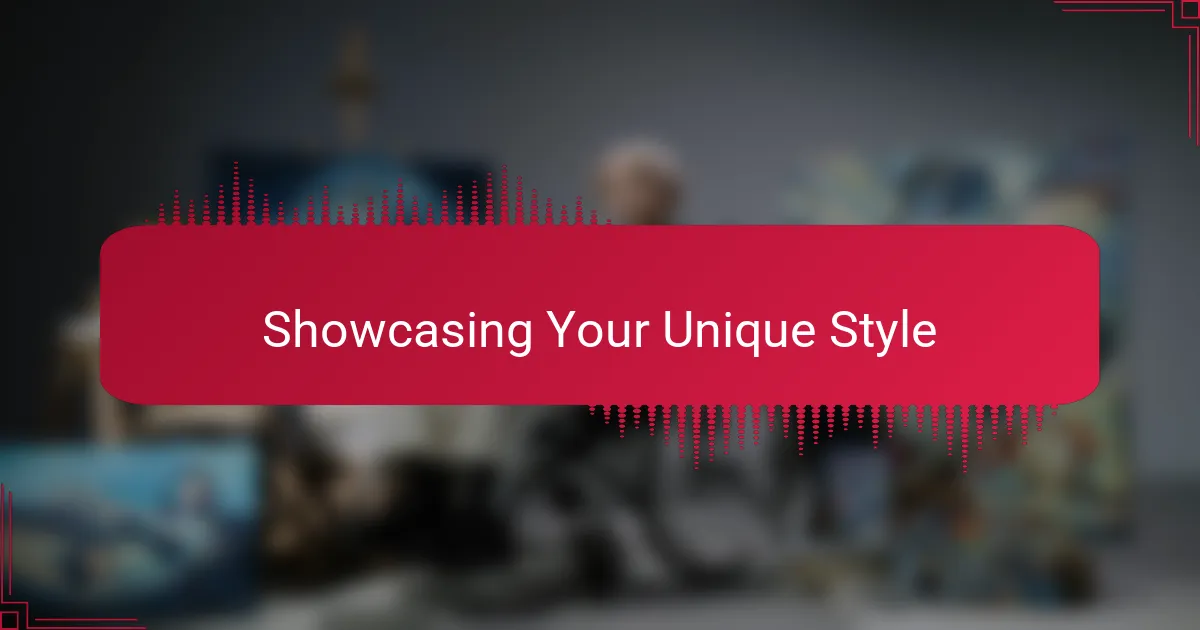
Showcasing Your Unique Style
When it comes to showcasing your unique style, authenticity is key. I’ve always found that the moments I felt most vulnerable in my work resonated the most with my audience. For instance, I shared a comic that reflected my childhood experiences, and the response was incredible. Readers connected not just with the characters but with my personal narrative, showing that when we embrace and share our individuality, it creates a stronger bond.
Selecting pieces for my portfolio requires careful consideration of what truly represents my artistic voice. I remember struggling to choose between a couple of different styles I had explored. But then I realized the importance of curating work that tells a consistent story about who I am as a storyteller. Have you ever felt torn between different influences? Finding that balance can be challenging but ultimately rewarding, as it helps define your unique artistic brand.
Another aspect I’ve embraced is the use of color palettes and visual elements that reflect my personality. One project highlighted a whimsical, vibrant color scheme that perfectly conveyed the tone I aimed to achieve. It was fascinating to see how those colors transformed audience perception of the story. I’ve learned that a cohesive visual identity not only draws viewers in, but it also makes them remember my style amidst a sea of creators. How do you want your art to feel? This question shapes the essence of how you present yourself in your portfolio.
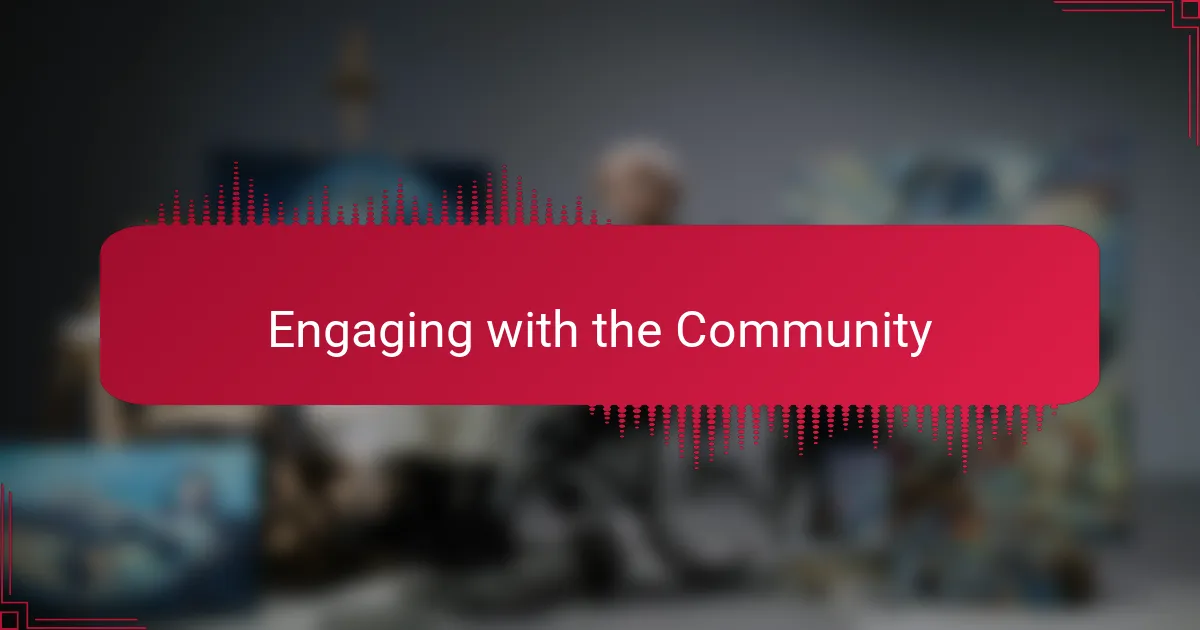
Engaging with the Community
Engaging with the community on Behance has truly been one of the most rewarding aspects of my portfolio-building journey. When I first joined, I was a bit hesitant to comment on others’ work or share my own. However, I quickly learned that interaction is key. By leaving thoughtful feedback and connecting with fellow artists, I not only found inspiration but also garnered support and encouragement for my own projects.
Interacting with other creatives can lead to invaluable friendships and collaborations. Some of my best projects have come from connections I made through commenting on others’ illustrations. Here’s how you can actively engage with the Behance community:
- Comment on projects that inspire you; share what specifically resonates with you.
- Join groups related to your interests and actively participate in discussions.
- Follow artists whose work you admire and engage with them through messages.
- Share your process and insights in your project updates to invite feedback.
- Attend Behance events or webinars to meet other creatives offline.
- Collaborate on joint projects to learn and grow together.
Each of these actions can deepen your involvement in the community and expand your network, making the creative process even more fulfilling.
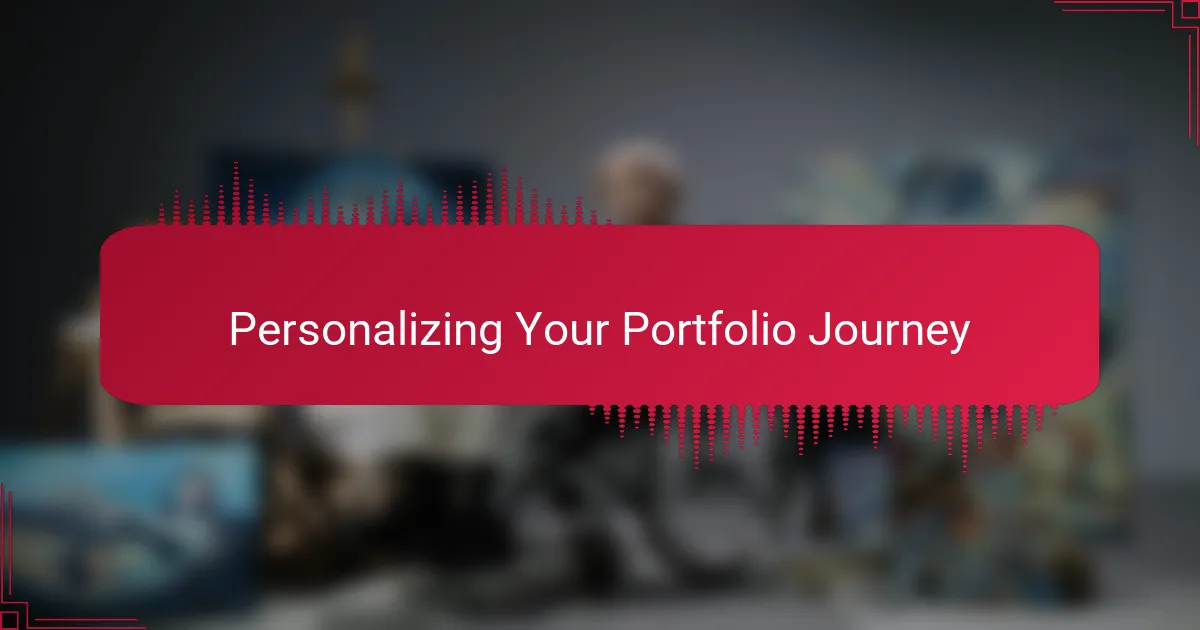
Personalizing Your Portfolio Journey
When I started building my portfolio on Behance, I quickly realized how crucial it was to personalize my journey. This meant showcasing not just my best work, but also pieces that reflected my unique style and storytelling ability. I wanted every visitor to feel a connection, much like when readers dive into a compelling comic book where every character and detail resonates on a personal level.
As I curated my projects, I focused on a few key aspects that helped me stand out:
- Authenticity: I shared stories behind my artwork, which made my portfolio more relatable.
- Diversity in Projects: I included a mix of styles and genres to reflect my versatility as a creator.
- Detailed Case Studies: I provided insights into my creative process, showcasing how I tackled different challenges.
- High-Quality Visuals: I ensured all images were crisp and clear, which is essential in visual storytelling.
- Engagement with Others: I connected with fellow artists and sought feedback, which enriched my work and experience.
